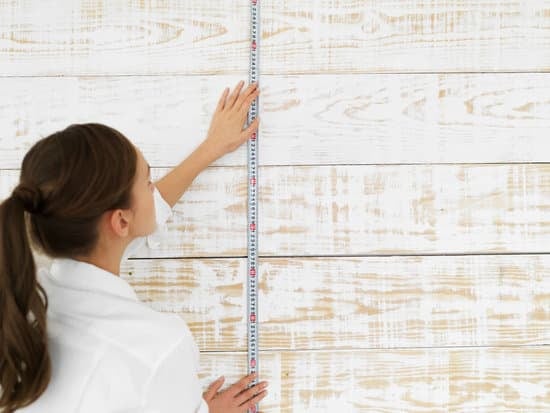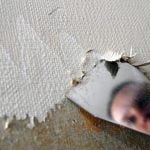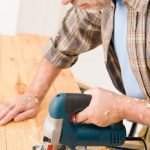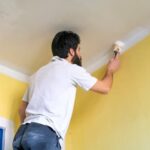Are you wondering how to improve ventilation in your home? Proper ventilation is essential for maintaining a healthy indoor environment, yet it is often overlooked by many homeowners. In this article, we will explore the importance of proper ventilation and provide valuable insights on how to effectively improve the air quality in your living space.
Poor ventilation can lead to a range of issues that affect not only your comfort but also your health. From unpleasant odors and excessive moisture to the accumulation of airborne pollutants, the signs of poor ventilation are not only noticeable but can also have detrimental effects on your well-being. Understanding these signs is crucial in identifying the need for better ventilation solutions.
The health implications of poor ventilation go beyond discomfort; they can also lead to respiratory problems, allergies, and other serious health conditions. By addressing the root cause of inadequate ventilation in your home, you can significantly reduce the risk of developing these health issues and create a safer and more comfortable environment for yourself and your family.
Signs of Poor Ventilation in Your Home
Poor ventilation in your home can result in a variety of negative effects on both your health and the condition of your living space. One of the most obvious signs of poor ventilation is a musty or stale odor, which can indicate that moisture and pollutants are becoming trapped inside.
Another sign to watch out for is the presence of mold and mildew, which thrive in damp, poorly ventilated environments. Additionally, if you notice condensation on windows or walls, this could be a clear indicator that your home is not properly ventilated.
One technique to improve ventilation in your home is by using natural methods such as opening windows and doors when weather permits. This allows fresh air to circulate and push out stagnant air and pollutants. In addition, installing extractor fans in areas prone to high humidity, such as the bathroom and kitchen, can help remove excess moisture from the air.
It’s important to recognize these signs early on so that you can take proactive measures to address the issue before it leads to more severe problems. By understanding how to improve ventilation in your home, you can create a healthier and more comfortable living environment for you and your family.
| Signs of Poor Ventilation | Methods to Improve Ventilation |
|---|---|
| Musty or stale odors | Utilize natural ventilation techniques |
| Mold and mildew growth | Install extractor fans in high humidity areas |
| Condensation on windows or walls | Open windows and doors when possible |
The Health Implications of Poor Ventilation
Poor ventilation in the home can lead to a host of health issues for you and your family. When indoor air quality is compromised, allergens, pollutants, and other harmful particles tend to accumulate, causing respiratory problems and aggravating existing health conditions. If you’ve noticed an increase in allergies or asthma symptoms among your household members, poor ventilation could be the culprit.
Furthermore, inadequate ventilation promotes the growth of mold and mildew, which can have serious health implications. Exposure to these substances can lead to respiratory infections, skin irritations, and even more severe conditions in individuals with compromised immune systems. It’s crucial to address poor ventilation in your home to avoid these potentially dangerous health outcomes.
To improve ventilation in your home and safeguard your family’s health, consider implementing the following strategies:
- Regularly clean and maintain your HVAC system
- Install exhaust fans in bathrooms and kitchens
- Open windows and doors when weather permits
- Use air purifiers to remove pollutants from indoor air
By taking proactive steps to enhance ventilation in your living space, you can create a healthier environment for yourself and your loved ones. Always prioritize the well-being of those you care about by ensuring that your home is properly ventilated. Remember that professional assistance is available if you’re unsure how to improve ventilation in your home effectively.
Simple Ways to Improve Ventilation in Your Home
Proper ventilation in your home is essential for maintaining a healthy indoor environment. Without adequate ventilation, indoor air pollutants can build up, leading to a range of health issues and discomfort. Understanding how to improve ventilation in your home is crucial for creating a comfortable and safe living space for you and your family.
Here are some simple ways to improve ventilation in your home:
- Open Windows and Doors: One of the easiest and most effective ways to improve ventilation in your home is by opening windows and doors. This allows fresh air to enter the space while pushing out stale air and pollutants.
- Use Exhaust Fans: Install exhaust fans in areas prone to moisture buildup, such as the kitchen and bathroom. These fans help to remove excess humidity, odors, and pollutants from the air, improving overall air quality.
- Utilize Window Ventilation: If you have windows that can be opened on opposite sides of a room, take advantage of cross-ventilation. This technique creates a natural airflow by allowing fresh air to enter through one window while expelling stale air through another.
By implementing these simple strategies, you can significantly improve the ventilation in your home, leading to better indoor air quality and a healthier living environment for you and your loved ones.
Utilizing Natural Ventilation Techniques
Natural ventilation techniques are an effective and cost-efficient way to improve the air quality in your home. By allowing fresh air to circulate, you can reduce indoor pollutants and create a healthier living environment for you and your family.
Opening Windows and Doors
One of the simplest ways to improve ventilation in your home is by opening windows and doors. This allows fresh air to enter and stale air to exit, promoting better airflow throughout your home. Consider keeping windows and doors open for a few minutes each day, especially in the morning or evening when outdoor air quality is at its best.
Using Window Ventilation Fans
Window ventilation fans are an effective way to increase airflow in specific areas of your home. These fans can be installed in windows to draw fresh air into the room, improving overall ventilation. Consider using window fans in kitchens, bathrooms, or other areas where moisture tends to accumulate.
Strategic Landscaping
Strategic landscaping around your home can also help improve ventilation. Planting trees or shrubs strategically can create natural windbreaks that direct airflow towards open windows or doors. Additionally, trees and plants can help filter outdoor air before it enters your home, reducing indoor pollutants.
By utilizing these natural ventilation techniques, you can effectively improve the ventilation in your home, creating a healthier and more comfortable living environment for you and your family.
Installing Ventilation Systems
Understanding the Different Ventilation System Options
When it comes to improving ventilation in your home, there are several options to consider. One popular choice is the use of exhaust fans, which can help remove stale air and moisture from specific areas such as bathrooms and kitchens.
Another option is a whole-house ventilation system, which is designed to exchange indoor air with outdoor air throughout the entire home. Additionally, heat recovery ventilators (HRVs) and energy recovery ventilators (ERVs) are advanced systems that not only improve ventilation but also help maintain energy efficiency.
Considerations for Installation
Before deciding on a ventilation system for your home, it is important to consider various factors. The size of your home, the number of occupants, and local climate conditions are all essential considerations when choosing a ventilation system. You should also take into account any existing ductwork or wiring that may impact installation. It is advisable to consult with a professional HVAC technician to determine the most suitable ventilation system for your specific needs.
Maintaining and Upgrading Ventilation Systems
Once a ventilation system is installed in your home, proper maintenance is crucial for optimal performance. This includes regularly cleaning or replacing filters, checking for any blockages or malfunctions, and ensuring that all components are working efficiently. Additionally, if you have an older ventilation system, consider upgrading to a more modern and energy-efficient model to further improve indoor air quality.
By understanding the different options available and considering important factors before installation, homeowners can effectively improve ventilation in their homes. Whether through simple upgrades like exhaust fans or more complex installations such as HRVs or ERVs, investing in a reliable ventilation system can greatly enhance indoor air quality and overall comfort within the home.
Maintaining a Healthy Indoor Air Quality
Ensuring a healthy indoor air quality is vital for the overall well-being of you and your family. Poor ventilation can lead to an accumulation of indoor air pollutants, which can result in various health issues such as respiratory problems, allergies, and headaches. It is important to take proactive measures to maintain good air quality in your home.
One effective way to improve ventilation and maintain a healthy indoor air quality is by regularly cleaning and replacing air filters in your HVAC system. A dirty or clogged filter can significantly reduce the airflow and allow dust, pollen, and other particles to circulate throughout your home. By replacing the filter every few months, you can prevent these contaminants from accumulating and ensure proper ventilation.
Another way to improve ventilation in your home and promote healthy indoor air quality is by using exhaust fans in areas prone to moisture buildup, such as the kitchen and bathroom. These fans help remove excess humidity and odors, reducing the risk of mold growth and improving overall air circulation. Additionally, consider opening windows whenever possible to allow fresh outdoor air to enter your home, further enhancing ventilation.
Proper maintenance of ventilation systems and implementing natural ventilation techniques are critical for maintaining a healthy indoor air quality. By being attentive to these aspects, you can create a comfortable living environment that promotes wellness and reduces the risk of indoor air pollution-related health issues.
| Topic | Detail |
|---|---|
| Cleaning Air Filters | Regular replacement prevents dust accumulation |
| Using Exhaust Fans | Reduces moisture buildup and odors |
| Natural Ventilation Techniques | Opening windows for fresh outdoor air |
Hiring a Professional for Ventilation Improvement Projects
When it comes to improving ventilation in your home, sometimes the job may require the expertise of a professional. While there are several simple ways to improve ventilation in your home, such as opening windows and utilizing fans, more complex issues may need the help of a ventilation expert.
If you have tried all the DIY methods and still notice poor air circulation in your home, it may be time to consider hiring a professional to assess and address the issue.
A professional ventilation expert can conduct a thorough evaluation of your home’s ventilation system and identify any potential problems or areas for improvement. They have the knowledge and experience to recommend the best solutions for improving ventilation based on your specific needs, budget, and existing infrastructure. Whether it’s installing a new ventilation system, repairing ductwork, or upgrading existing equipment, a professional can ensure that the work is done correctly and efficiently.
Furthermore, hiring a professional for ventilation improvement projects can also help you avoid potential health risks associated with poor indoor air quality. These experts can provide valuable insights into how to improve ventilation in your home while also ensuring that the solutions implemented comply with relevant building codes and regulations. By entrusting ventilation improvement projects to a qualified professional, you can enjoy peace of mind knowing that your home’s air quality will be significantly improved.
Conclusion
In conclusion, understanding the importance of proper ventilation is essential for maintaining a healthy home environment. Poor ventilation can lead to a variety of health issues and discomfort, which can be easily avoided by taking proactive steps to improve the airflow in your home. By utilizing natural ventilation techniques such as opening windows and doors strategically, as well as considering the installation of ventilation systems, you can significantly enhance the air quality in your living space.
Improving ventilation in your home not only leads to better indoor air quality but also contributes to a more comfortable and enjoyable living environment. By taking simple steps such as regularly cleaning vents, using exhaust fans and considering professional assistance for larger projects, you can ensure that your home is well-ventilated and free from harmful pollutants.
Incorporating these methods into your household routine will ultimately lead to a healthier and more pleasant living space for you and your family. Remember that the benefits of a well-ventilated home are far-reaching, impacting not only physical health but also quality of life. So take charge of your indoor air quality today and make it a priority to improve ventilation in your home.

I’m thrilled to have you here as a part of the Remodeling Top community. This is where my journey as an architect and remodeling enthusiast intersects with your passion for transforming houses into dream homes.





